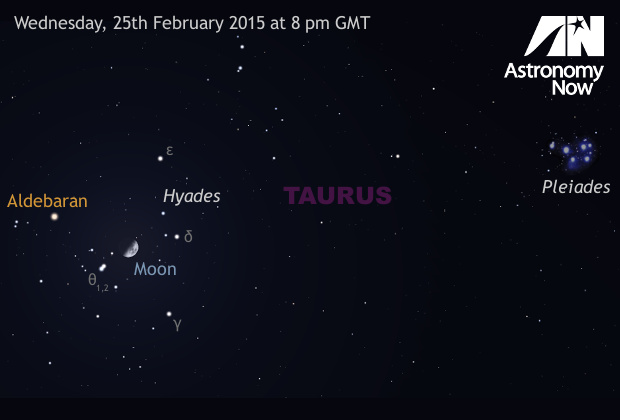
Stars ε (epsilon), δ (delta), γ (gamma) and θ (theta) Tauri, plus the constellation’s brightest star, Aldebaran, form the distinctive V-shaped Hyades asterism that is known as the ‘head of the bull’. Aldebaran is an orange giant star some 65 light-years away, therefore much closer to us and unconnected with the cluster that happens to be in the same line of sight.
Observers with binoculars — particularly of the low power, wide-field variety such as 7x50s, 7x35s or 8x30s — can also see the entire Hyades cluster in the same field of view. Note that the field is strewn with interesting wide double stars, particularly in the vicinity of naked-eye pair θ1 and θ2 Tauri.
While you’re in the area, don’t miss the beautiful Pleiades open cluster, otherwise known as the Seven Sisters or Messier 45, two binocular fields away to the upper right. The Pleiades cluster is three times further away than the Hyades, but it’s much richer — around a thousand component stars lie within an 8-light-year radius. Messier 45 is up to 150 million years old and its brightest, hot blue stars are wreathed in delicate nebulosity that reflects their light in long-exposure photographs. Clear skies!
Inside the magazine
You can find out more about the Moon, planets and winter constellations in the February edition of Astronomy Now for a full observing guide to the night sky.
Never miss an issue by subscribing to the UK’s biggest astronomy magazine. Also available for iPad/iPhone and Android devices.




